The content of the article
“Troubled baby! Not a minute sits still! Again the designer poured out, threw the dolls off the shelf, hit the other child and ran with his typewriter into the opposite corner of the group! ”- parents usually hear such complaints from teachers, taking the restless preschooler from kindergarten. Psychologists and neuropathologists in one voice call such a child hyperactive. A similar picture is observed daily in children around the world. It has long ceased to be a rarity in our country. According to statistics provided by preschool teachers of one of the kindergartens near Moscow for 2016, hyperactivity was raised to every third child from 3 to 7 years old. 2017 did not significantly change these figures, and even in some age groups increased them.Where does this phenomenon come from, is it so bad and how to correct it - all this will be covered in this article.
Causes of Motor Dysfunction Syndrome (ADHD)
The mechanism of development of hyperactivity at this stage is not fully understood. Nevertheless, experts involved in this issue tend to the three factors of development of this problem:
- The hereditary factor - as a rule, if one examines the pedigrees of children suffering from this syndrome, it can be revealed that the immediate family (more often along the same-sex line with the child) also had deviations in the behavior of this nature. Often, the features of a once hyperactive child can also be seen in the behavior of the parents themselves - adults behave unnecessarily fussy, bite their nails, bang on the table with their fingers or the first object that came to hand, often hysterical and restrained.
- The mutation factor is caused by an acquired change in one or in a group of genes responsible for the formation of the psyche of the child. These transformations are possible both at the stage of genital cell formation and during fetal development.
- The behavioral factor - simply put, is “pseudo-hyperactivity.”If you look at the psyche of such a child, then, most likely, nothing characteristic of ADHD will be found. Such children, as a rule, sympathize with fidgets and try to imitate them in every way. This phenomenon is most often observed in preschool and adolescence, when the desire to be like everything pushes a weak and indecisive child to copy the behavior of the “chieftain of the collective” in order not to be ridiculed among classmates.
Medically hyperactive
Hyperactivity or ADHD (syndrome of motor disinhibition of the child) - inability to concentrate on a specific matter, frequent switching of attention, simultaneously associated with motor activity. Simply put, it is a dysfunction of the processes of inhibition and arousal in favor of the latter.
It is known that behind the regulation of these processes in the human body there is a whole complex of internal organs and systems - these are nervous, humoral (hormonal), musculoskeletal, respiratory, cardiovascular, and a number of many other organs that make up a single organism.
From the point of view of the humoral nervous system, 2 leading hormones, norepinephrine and dopamine, are responsible for the regulation of these processes.A shift to a certain side of each indicator leads to an external imbalance in the psyche of the child. These processes are regulated by the cerebral cortex of the cerebral hemispheres, where all conscious impulses are laid. The processes of excitation and inhibition are antagonists to each other: the change of their cycles is a protective reaction of the body against overloads and stagnations. In a child, these processes are just beginning to form, many things still have to be rearranged to the rhythm dictated by life.
And yet, why are some children not childly calm, while others resemble a tumbleweed? The explanation here is quite simple - the fact is that dysfunction also has a different character: in some children excitement prevails, and in others the opposite - inhibition.
Hyperactive baby - what is he?
Hyperactive children are a real pedagogical problem for educators, and at school age - for teachers and other educators. Restless, they do not sit still, often break away from it during classes, interfere with others, at an older age - they are rude to teachers in response to the requirement for discipline. Often these children are in the bulk and make companies difficultteenagers. How to recognize the elements of hyperactivity in your child and to address this problem in time?
Psychologists identify 2 forms of ADHD - autistic and classical.
Autistic form of ADHD
"It seems to be hyperactive and not similar." This is a latent form of hyperactivity, in which the child has autistic elements of behavior. This form is more common in girls of primary school age. When it first of all stands out a strong distractibility of attention - the child seems not to be present in the lesson. He seeks to know everything around him: the pictures on the wall of the class, the number of crows on a branch (it was thanks to such students that the saying “count the crow”) went. Along with such spilled attention, in parallel, there is a strong physical activity - he can tear pieces of paper to pieces, disassemble the handle, and talk with his legs under the table. If it hurts the adjacent chairs and interferes with other children, it is not aware of this, as it often does not do so arbitrarily.
What is the problem of such children?
- Because of the distraction of attention, the child often gets into unpleasant situations,starting from a rod suddenly spilled out of the lesson at a lesson, and ending with the fact that while distracted by foreign objects, it risks losing its own.
- He does not assimilate information in the lesson, as he simply does not listen to the teacher. This becomes a significant obstacle in the qualitative acquisition of knowledge.
- Inattention can be detrimental to the child's independent travels - he simply misses his stop in the transport and runs the risk of dropping in the wrong place.
- The first stage of the formation of personal irresponsibility.
The classic form of ADHD
This category is the very concept of "hyperactivity," as it is commonly perceived. This is the main form of motor disinhibition, occurring in children of any gender and age. It used to be considered that ADHD is not a disease, but a pedagogical neglect of a child, inattention to it from parents, indifference from hopelessness among teachers. In fact, such children were either put on a “cross”, or they were perceived with a light bit of irony.
Recent studies have proved that motor disinhibition syndrome is a mental illness that needs to be corrected in time.But before making adjustments, it is important to correctly identify the main features according to which we can speak about the presence or absence of this deficiency in this particular case:
- Restlessness - a child with motor disinhibition does not sit in a certain place. He needs to constantly move in space and, if he is forced to sit for a long time definitely localized, he begins to move, sway from side to side, move his arms and legs, hinder other children, often contributing to their activities and thus conflict.
- Forgetfulness - a child with a similar deviation on the move forgets the activity that he has been doing recently, he can go to the closet behind a comb, meet another child there in the locker room, see his toy and forget where he was and why he went.
- Distracted attention is not the ability to concentrate on a certain kind of activity and fast switching to other elements, often not carrying a given load. He can glue the car body, then remember that there are trees around her (which are not in the task!), Get a pencil and start drawing trees.At the same time about the body, he can not remember at all.
- Fussiness - the inability to systematically perform a certain motor action. A child on the way to the dressing room may begin to walk around the tables and chairs in the group, which are completely at the other end of the door. During the teacher's request to transfer several items and put them on certain shelves - he will run back and forth several times empty-handed, forgetting to take what he needs, may not take what he was told and put it in the wrong place. There were cases when such children after a walk would put toys in baskets of another group or things not in their lockers, and often left them completely abandoned.
How to help this child?
This baby needs a comprehensive measure of support from 3 or more types of specialists:
Psychologist - Work is under way on the concentration of attention in such children. These are various role-playing games, theatrical performances, conversations with a child on specific topics. In work with such children, an individual form of training is recommended, where distractions are excluded. It is important to understand what is expressed a great interest in the baby,and to work on the elaboration of shortcomings on the basis of this direction: if the child is interested in the railway, it is important to build your own activities in this plane.
Teachers - the task is not to throw even deeper than such a kid, but on the contrary, to direct him to a useful course, to interest, emphasize his advantages and at least pay attention to the disadvantages:
- To make such a pupil a “first assistant” and keep the process of work done by him constantly under the foreseeable control and, if the child began to be distracted, in time to return him to the activity that is required of him.
- To celebrate the merits of the baby in front of parents, emphasize how well he performed the work and slightly touch the side of the shortcomings.
- Correct the behavior of parents if they are excessively strict with the child.
- If he was guilty - strictly, but without insults, to scold him for bad behavior, to explain to him what he did not do as it was necessary to do and to demand from him to repeat everything said.
Doctors - as a rule, their visit is recommended in the event that the first two categories do not cope with the tasks set.Parents are advised to consult a neuropsychologist, a neurologist or a child psychiatrist. The specialist evaluates the complex work of the nervous system, talks with the child in order to assess the maturity of speech functions and intelligence, and then selects the medications necessary for correcting the defect.
As a rule, appointed:
- nootropic group of drugs to feed the brain;
- medications that support vascular tone;
- B vitamins, for the harmonious formation of nerve impulses;
- if necessary, a number of specialized drugs aimed at stabilizing processes.
From folk remedies various sedative charges are used to suppress the predominance of stimulating processes:
- Valerian tablets (alcohol-based tincture is not recommended).
- Teas with linden, mint, melissa.
- Broths of Dagla, Hypericum.
- A caution is given tincture of motherwort.
- Rosehip infusions to enhance immune functions.
- Before going to bed, conifers or lavender baths are recommended.
Parents - in spite of the fact that they are often not specialists, their role remains the most important in the life of a child.Their task becomes - the formation of the correct mode, both general and power:
- Make and think over the correct mode of the day, strictly follow its observance.
- Exclude annoying and obscure products from the diet.
- Ensure a quiet timely bedtime: interfere with all kinds of active games, dim the lights, turn down the volume of the TV sound (music), or turn it off altogether.
- Control over information received from outside (Internet, friends, school, TV).
- Eliminate stressful situations in the family, especially those related to divorce, try to be more delicate with each other in the presence of children.
- Watch for relatives - whether there is a negative factor in setting against one of the parents, connivance in upbringing, a bad example.
- Participate in resolving conflicts with teachers, try to be a child in them a lawyer, not a prosecutor.
- Often talk with your son or daughter about his inner state: what is worrying, solve personal problems, do not divert communication in a narrow plane “school - lessons”.
Mistakes made in the educational approach to a child with ADHD
Despite the fact that ADHD is recognized worldwide as a pathology and a set of measures have been developed to help overcome it, to this day, adults make some serious mistakes in dealing with such children:
- They constantly find fault with them and otdergivayut them, demeaning at the same time the identity of the child, Overly criticize every action, while not considering it necessary to praise.
- Permit permissiveness in behavior.
- Children have unsupervised watching of television and the Internet.
- Stressful situations in the family, provoking unnecessary worries.
- Inappropriate behavior with the child of one of the relatives (connivance in the development of bad habits, rude expressions, attitude against other family members, an example of an antisocial lifestyle, etc.).
- No control over the regime of the day (allow the child to control themselves).
A reasonable approach to solving a problem is the key to successfully solving it in all difficult life situations. The personality of an individual child is the future of the family and the nation as a whole.
Video: 10 rules for raising a hyperactive child

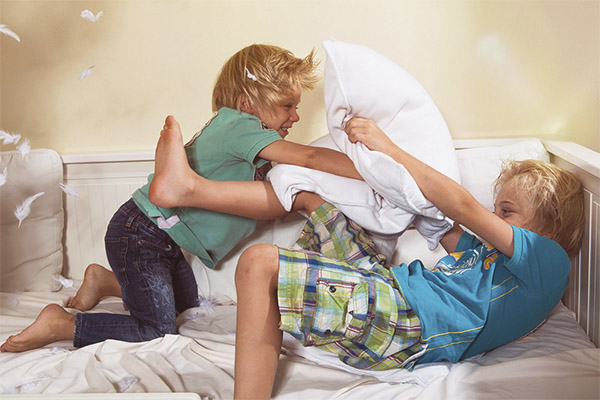
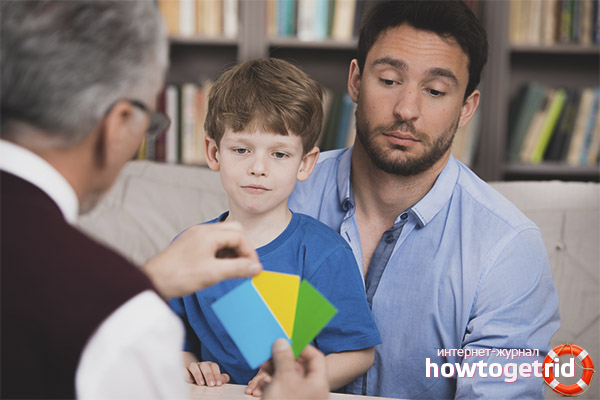




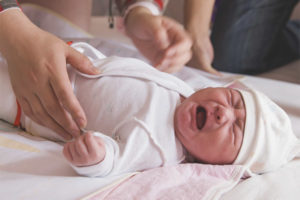
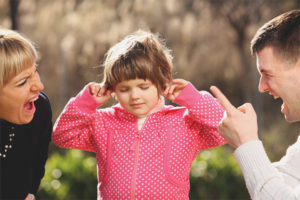
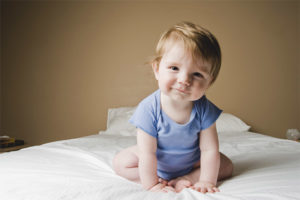
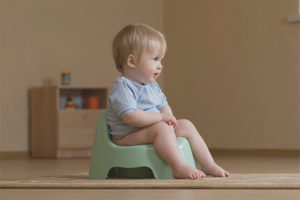

To send